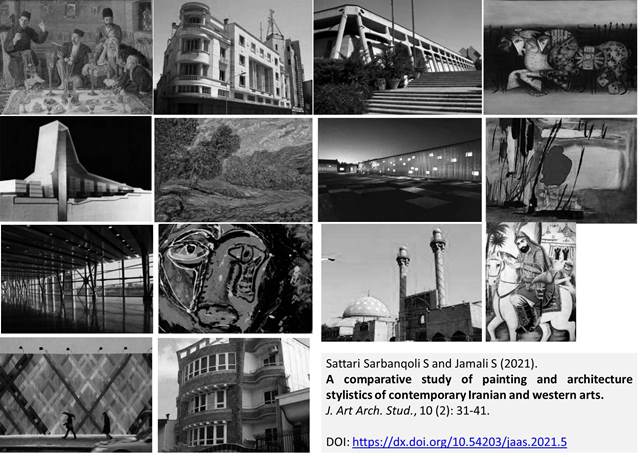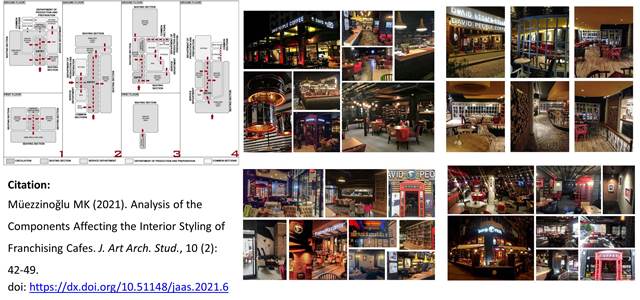Previous issue | Next issue | Archive
![]() Volume 10 (2); December 15, 2021 [Booklet]
Volume 10 (2); December 15, 2021 [Booklet]
The study of consequences of Mongolians' invasion and establishment of the Ilkhanate dynasty on Iranian culture, art, and architecture
|
|
Tabe Afshar S.
J. Art Arch. Stud., 10(2): 24-30, 2021; pii:S238315532100004-10
DOI: https://dx.doi.org/10.54203/jaas.2021.4
ABSTRACT
The invasion of Mongolians was one of Iran's most important events in the history of Iran that was accompanied by full-scale consequences, especially political, social, and artistic aspects that have never left Iranian societies and are still current and ongoing. During these destructive wars that eventually led to the establishment of the Ilkhanate dynasty, countless cultural and artistic changes happened both among the Mongolians and also in Iranian society. With help of researches and library studies, and by taking an analytical look into art and architecture of this era, this study aimed to analyze the important political, religious, cultural, and social elements that affected the shaping of new concepts in architecture and art of the Ilkhanate period. Through these investigations, it was concluded that although various artistic and architectural elements were witnessed in the Ilkhanate period, following the presence of the Mongolians in this period, new artistic genres and schools were shaped alongside a spiritual and different atmosphere that was ruling art and architecture which was different from previous periods in Iran.
Keywords: Ilkhan Architecture, Religion, The Mongolian Culture, Art and Sufism.
[Full text-PDF] [Crossref Metadata] [Export from ePrints]
A comparative study of painting and architecture stylistics of contemporary Iranian and western arts
Sattari Sarbanqoli S and Jamali S.
J. Art Arch. Stud., 10(2): 31-41, 2021; pii:S238315532100005-10
DOI: https://dx.doi.org/10.54203/jaas.2021.5
ABSTRACT
Iranian art reflects the spirit and inclinations of Iranians, regardless of place and time of origin. Another point is the diversity of works of art which shows that the ancient Iranians had high skills in different regions. Iranian architecture and painting have always been present side by side and influentially throughout history, and this connection persists until today in contemporary Iranian art. The present article is a research on the features and concepts of architectural and painting styles in contemporary Iranian art and a comparative comparison of these two arts which is centered on the concept of architecture and painting. The contemporary architectural styles and tendencies in question date back to the first and subsequent Pahlavi rule. The general objectives of the research are to apply the styles of painting and architecture in Iranian art to achieve the same conceptualism of these two arts. For this purpose, three main categories have been studied: the first part is contemporary Iranian architecture, the second part is contemporary Iranian painting and the third part is a comparative comparison of contemporary Iranian architectural and painting styles. The present research is an analytical and comparative research and the research method is based on the application of styles and logical reasoning. Documentary and library studies and theories of experts are also the basis of this article.
Keywords: Painting, Styles, Pahlavi, Iranian architecture
[Full text-PDF] [Crossref Metadata] [Export from ePrints]
Analysis of the Components Affecting the Interior Styling of Franchising Cafes
Müezzinoğlu MK.
J. Art Arch. Stud., 10(2): 42-49, 2021; pii:S238315532100006-10
DOI: https://dx.doi.org/10.54203/jaas.2021.6
ABSTRACT
Changes in the supply-demand relationship depending on eating and drinking, one of the basic needs of human beings, have also induced some transformations in the spatial formation of cafes operating in the food sector. Therefore, it is critical to ensure spatial quality by considering the functional, aesthetic and psychological conditions in the formation of cafe interiors. In this study, which was discussed to contribute to the design approach by supporting the theoretical and practical unity in the discipline of interior architecture, the changes and innovations that the franchising system contributed to the interior design understanding of cafes were analysed. Besides the determination of the components in the interior design for cafes, the study also aims to question the relationship between theoretical knowledge and practice. While the study includes literature analysis and evaluation as a method, it also reveals the analysis of the components that affect the interior shaping for each cafe space. The interior design application projects used to support the theoretical dimension in the research are the cafes of the David People brand that serve with the franchise system in the provinces of Isparta, Konya, Mardin and Eskişehir. The spatial components determined through these cafe interiors, which have similar and different dynamics, were analysed and the findings were discussed. As a result, it is assumed that this study contributes to the designer in the design process to develop a new method and create a design proposal that includes the interior components of the cafes set as the sample area.
Keywords: Franchising System, Food And Beverage Places, Cafe, Interior Components.
[Full text-PDF] [Crossref Metadata] [Export from ePrints]
Previous issue | Next issue | Archive



